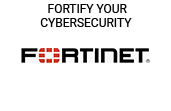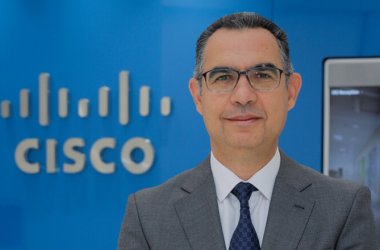Sid Bhatia, Area VP & General Manager, Middle East, Turkey & Africa at Dataiku, has penned an op-ed for April’s edition of CNME, in which he argues that one of the lessons that can be learned from DeepSeek, is the fact that ‘AI Optionality’ is going to be key.

Do you remember ChatGPT?
Do you remember when it was the new kid on the block? How times have changed in the world of generative artificial intelligence (GenAI).
DeepSeek has been around for some 18 months, but the echoes of New Year celebrations could still be heard as the Chinese startup hit the headlines this month. It released its GenAI assistant as a free app, claimed a development cost of less than US$6 million, and wiped hundreds of billions of dollars in market capitalization from companies like NVIDIA and Microsoft.
In the United Arab Emirates (UAE), private enterprises face a future that will be dominated by AI, with GenAI alone projected to be a US$2-billion segment by 2030.
When trying to grab a share of that value, UAE enterprises must be mindful of the user data horded by AI vendors like DeepSeek — ranging from prompts to uploaded files — and the implications for compliance with regulators inside and outside UAE borders.
The nation’s AI innovators must therefore develop flexibility in their own infrastructure that will allow them to avoid vendor lock-in and innovate freely, on their own terms, while meeting their compliance obligations.
DeepSeek’s rocket-like rise illustrates just how much GenAI — itself a disrupter of the larger AI industry — has changed in the two years since OpenAI’s ChatGPT captured our imaginations. We continue to see leaps forward in the quality of models.
Capabilities are becoming progressively more advanced and features that were turning heads just six months previously are standard fare today.
Cost and value
As boundaries are pushed, the costs of building a production-ready model are plummeting. It is this very selling point, remember, that made DeepSeek so impactful. Cost-effectiveness also allows AI to be democratized more readily, leading to faster time-to-value for AI investments.
Throughout these developments, open-source AI has been building momentum and producing admirable results that are made available to a global community of innovators. The geography of that community is diverse, again leading to more opportunities in more markets.
If the adage, “the only constant is change” is true of life, it is doubly true of technology and even more so of AI. But stakeholders in the field of GenAI must check the bulletin boards hourly for the latest breakthrough.
If an organization is in the process of adopting GenAI, its decision-makers must obtain, maintain, and retain the flexibility in their infrastructure to accommodate the dizzying pace of change. The benefits of a flexible AI infrastructure include allowing an organization to address the speed of change, as today’s breakthrough becomes tomorrow’s baseline.
While due diligence must, of course, be baked in, plug-n’-play adoption should be the goal. When a new model or capability becomes available, the Everyday-AI enterprise should be able to embrace it without having to rebuild its AI infrastructure. Organizations must be able to protect their investments so that value is created today, tomorrow, and next year.
Training and inference costs continue to evolve. More flexible architecture means more cost-effective solutions. Pivoting from one model to another or switching providers in an instant are other benefits of a flexible infrastructure.
Organizations can optimize AI investments as they optimize performance. And when tweaking the AI stable, businesses will find that each AI solution is at home in its own unique infrastructure. Legacy hardware may be sufficient for some; others may need specialized equipment and resources.
Flexible architecture allows the organization to take full advantage of its existing infrastructure while procuring new tools as needed, assured by the knowledge that they will be compatible with existing systems.
The power to pivot
Because change is the only constant, uncertainty reigns. Risk is everywhere and must be managed. In GenAI, risk takes the shape of changes in model availability, performance, and cost, or in new regulatory requirements.
A flexible platform is capable of maintaining multiple model options, allowing Everyday AI organizations to quickly turn the key on new models when previous ones become inviable.
With the right flexibility, enterprises can innovate more quickly because their environment is built for experimentation. New models can be prototyped, tested, and released with relative ease. What I am describing is a futureproof foundation for core AI abilities that allows addition and subtraction without the need for a fundamental rebuilding of underlying elements.
Tool agnosticism is a critical component of effective AI-driven organizations. Such enterprises keep using the same storage and processing systems, so their previous investments continue to add value. They then integrate emerging AI models (open-source or proprietary) and adjust resources to fit.
We sometimes refer to this flexibility as “optionality”. It is our ticket to the AI future we will all share. Optionality will decide our place in that future. Are we set to be a spectator or a player?





